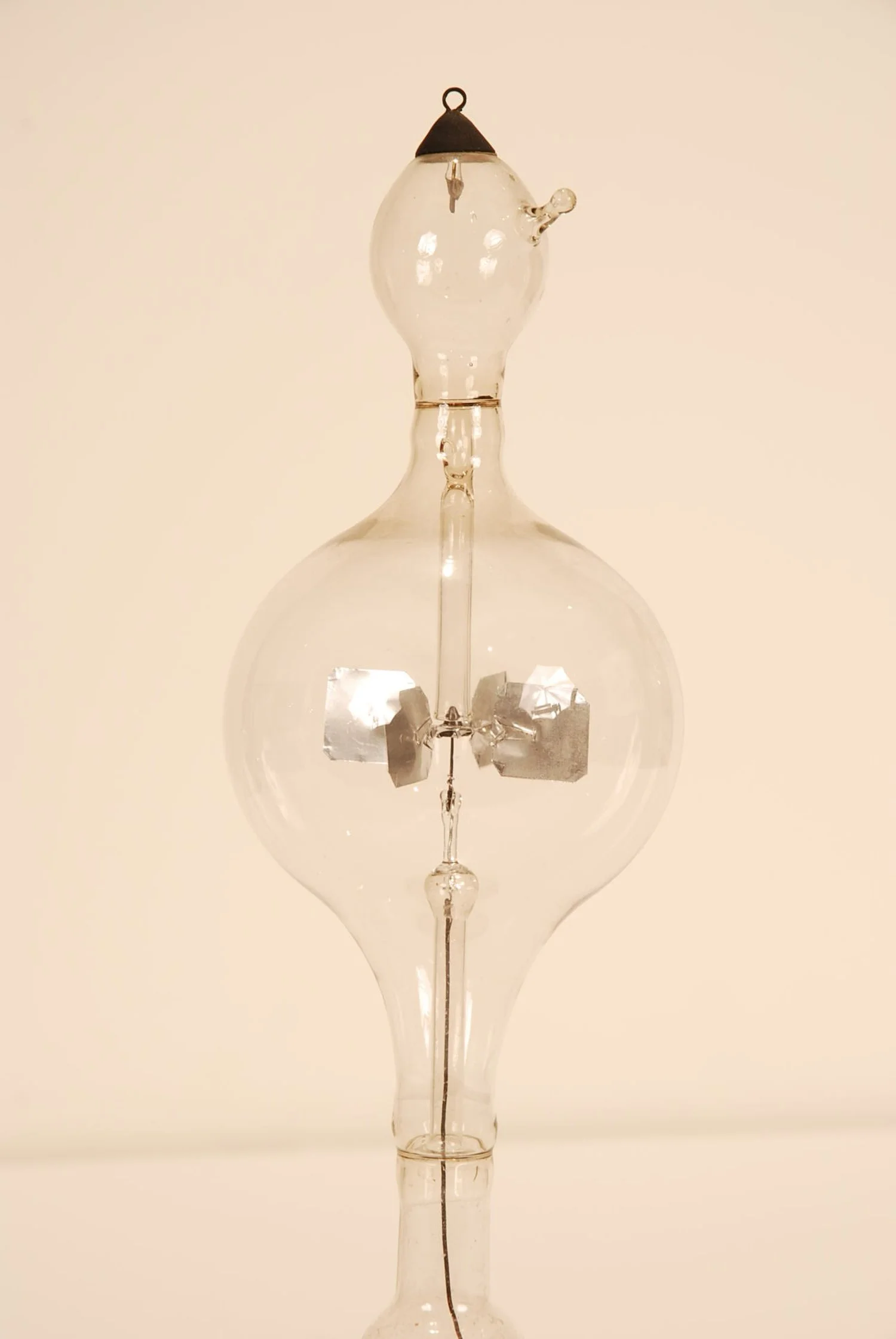Crookes Radiometer
Crookes Radiometer
Early 1920’s scientific demonstration Crookes Radiometer.
Instrument derived from important research of the late 19th and early 20th centuries, concerned in the first instance with the study of conduction of electricity in rarified gases. From these experiments arose many important discoveries such as the existence of cathode rays and X-rays and, eventually, the invention of the cathode ray oscilloscope which made possible the visual display of information carried by radio waves as in television.
A less important but far more spectacular outcome of this work was to be seen in the beautiful colors displayed when electricity at 1000 volts was passed through rarified gases, not only in the gases themselves, but also as a phosphorescence in the containing glass vessels and in fluorescent objects placed directly between the electrodes to which the energizing voltage was applied. Consequently, scientific instrument makers vied with one another to produce ever more elaborate discharge tubes to show these beautiful effects, not only for educational purposes, but also for Victorian scientific amateurs to amuse their guests after dinner.
The name of Sir William Crookes has always been synonymous with a wide range of vacuum tubes. In 1870, Crookes added yet more innovations to the mercury vacuum-pump system, which made it possible for the system to produce vacuums exceeding one millionth of an atmosphere. One of the most popular forms of these tubes was the fluorescence tube, a vacuum discharge tube in which an object was placed opposite the cathode, or negative electrode. The bombardment of this object with electrons from the cathode caused many spectacular fluorescent effects. Some years before J. J. Thomson's landmark discovery of the electron in 1897, Crookes used a tube of this type to demonstrate that some particle of matter was traveling from the cathode to the target object, causing it to fluoresce.
Overall 12” tall with turned wooden stand. 9” high x 4” diameter glass bulb with paddles.
Metal contacts for induction coil with top contact missing. Excellent except for missing contact. Sold as is.

